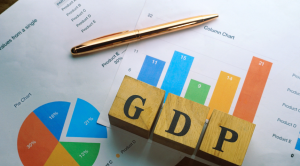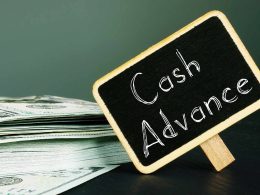The world of business is a constantly evolving one. With the rise and fall of markets, it is important to understand how the business cycle operates. A business cycle is a natural fluctuation in economic activity that occurs over time. Understanding the business cycle can help you make informed decisions about your investments, job search, and finances. This blog post will cover everything you need to know about the business cycle. From what it is and how long it lasts to strategies for managing it and maximizing profits during each phase. We will also discuss how a business cycle affects the common man and what factors can impact its trajectory. So let’s dive into this essential guide on understanding the business cycle!
Understanding the Business Cycle

The term “business cycle” is used to describe the recurrent fluctuations in economic activity that take place over time. It is characterized by periods of expansion, where the economy is growing and businesses are thriving, followed by periods of contraction, where economic activity slows down and businesses may struggle. Understanding the business cycle in the UK is important for businesses and policymakers alike, as it can help them anticipate and prepare for changes in the economy.
By analyzing key indicators such as GDP growth, employment rates, and consumer spending, economists can track where the country is in the business cycle and make informed decisions about monetary and fiscal policy. This knowledge can also be valuable for businesses, as it can help them plan for future growth or contraction and make strategic decisions to navigate through different phases of the business cycle.
What is a Business Cycle in the UK?

A business cycle is a pattern of expansion and contraction in an economy, typically measured by gross domestic product (GDP) changes. The four phases of a typical business cycle are expansion, peak, contraction, and trough. Expansion is characterized by increasing economic activity, peak is the period of highest economic activity, contraction is characterized by decreasing economic activity, and trough is the period of lowest economic activity.
The business cycle is important to understand because it can help businesses and individuals make decisions about when to invest, hire, or produce goods and services. For example, knowing that the economy is in an expansionary phase may prompt a company to invest in new equipment or open a new factory. Conversely, businesses may be more likely to lay off workers or reduce production if the economy is in a contractionary phase.
While the business cycle typically lasts several years, it can vary in length depending on a number of factors. Some economists believe that government policies can influence the length and severity of business cycles. Others argue that business cycles are primarily determined by underlying forces in the economy, such as consumer confidence or technological innovation.
How Long Does the Business Cycle Last?

The business cycle duration can vary, but on average, it tends to last around five and a half years. The business cycle refers to the fluctuations in economic activity that occur over time, including periods of expansion and contraction. During an expansion phase, the economy grows, businesses thrive, and employment rates increase.
Conversely, during a contraction phase, economic activity slows down, businesses may struggle, and unemployment rates rise. These cycles are a natural part of any economy and can be influenced by various factors such as government policies, consumer spending habits, and global economic conditions. While the length of each cycle can differ, understanding the general duration can help individuals and businesses make informed decisions about their financial planning and investment strategies.
How to Manage a Business Cycle?

Managing a business cycle can be a complex task that requires careful planning and strategic decision-making. Here are some key steps to help you effectively manage a business cycle:
- Understand the different phases of the business cycle: Familiarize yourself with the various stages of the business cycle, including expansion, peak, contraction, and trough. This understanding will help you anticipate changes in market conditions and adjust your strategies accordingly.
- Monitor key economic indicators: Keep a close eye on economic indicators such as GDP growth, interest rates, inflation, and consumer spending. These indicators can provide valuable insights into the current stage of the business cycle and help you make informed decisions.
- Diversify your customer base and product offerings: To mitigate the impact of economic downturns during contraction phases, having a diverse customer base and a range of products or services is important. This will help spread your risk and ensure you are not overly reliant on one market or product.
- Maintain financial stability: During periods of economic uncertainty, it is crucial to maintain strong financial stability. This includes managing cash flow effectively, reducing debt levels, and building up reserves to weather any potential downturns.
- Adapt your marketing and sales strategies: As market conditions change throughout the business cycle, it is important to adapt your marketing and sales strategies accordingly. This may involve targeting new markets, offering promotions or discounts during slower periods, or adjusting your pricing strategy to remain competitive.
By following these steps and staying proactive in monitoring market trends, you can effectively manage a business cycle and position your company for long-term success.
What Are the Stages of the Business Cycle?

The business cycle consists of four stages
1. Expansion Phase
During the expansion phase, the economy enters a period of growth and increased economic activity. This phase is characterized by rising gross domestic product (GDP), indicating a boost in production and consumption. As the economy expands, companies experience higher demand for their goods and services, leading to increased employment opportunities and higher wages.
The United States, for example, has experienced several expansions throughout its history, as tracked by the National Bureau of Economic Research (NBER). During this phase, the focus is on generating and maintaining positive economic growth, as measured by real GDP. It is also important to monitor indicators such as industrial production, stock prices, and real income to assess the health of the economy.
Additionally, policymakers may implement expansionary monetary policies, such as lowering interest rates or increasing the money supply, to stimulate further economic growth. The expansion phase is crucial to the business cycle, ensuring that the economy reaches its potential output and moves towards full employment.
2. Peak Phase
The peak phase in the business cycle represents the highest point of economic activity. It signifies a period of significant growth and expansion in the economy. During this phase, key economic indicators such as gross domestic product (GDP), industrial production, and stock prices reach their peak levels. However, it is important to note that a contraction or downturn often follows the peak phase in economic activity.
The peak phase is a critical turning point in the business cycle, marking the transition from expansion to contraction. It is typically characterized by high levels of employment, increased consumer spending, and strong business confidence. As the economy reaches its highest point, it sets the stage for potential challenges and risks. The NBER, or National Bureau of Economic Research, plays a crucial role in identifying the peak phase and determining the duration of the economic expansion.
In order to manage the peak phase effectively, policymakers and central banks employ various tools, such as expansionary or contractionary monetary policies. These measures aim to maintain a balance between sustainable economic growth and controlling inflationary pressures. By carefully monitoring economic variables and using statistical methods, policymakers can make informed decisions to prevent excessive risk-taking and mitigate the impact of periodic crises.
3. Contraction Phase
During the contraction phase of the business cycle, there is a noticeable decline in economic activity. This decline often leads to job losses and reduced consumer spending. As a result, businesses may experience a decrease in demand for their products or services. The NLP terms “decline,” “economic activity,” and “consumer spending” play a significant role in understanding this phase.
The decline in economic activity can have a domino effect on various aspects of the economy. For instance, when businesses face a decrease in demand, they may be forced to lay off employees, resulting in job losses. This, in turn, impacts individuals’ income and spending power, leading to reduced consumer spending. The contraction phase is challenging for businesses and individuals as it can potentially lead to financial difficulties.
It’s important to note that the contraction phase is a natural part of the economic cycle and can vary in duration. The impact of a contraction can be mitigated to some extent through appropriate measures such as expansionary monetary policies or fiscal stimulus. Overall, understanding the contraction phase is crucial for businesses and individuals to navigate through the challenging times of the business cycle.
4. Through Phase
The trough phase represents the lowest point of the business cycle, signalling the end of the contraction phase and the start of the subsequent expansion phase. During this phase, economic activity reaches its nadir, with various indicators, such as gross domestic product (GDP) and industrial production, at their lowest levels. Significant real income, employment, and overall economic performance declines often characterize this phase.
After reaching a trough, the economy begins to recover, leading to an expansionary phase. The trough phase is a critical turning point that paves the way for future growth and development. Economists and policymakers closely monitor this phase to assess the economic downturn’s severity and formulate appropriate measures to stimulate the economy.
It is important to note that the length and depth of the trough phase can vary from one business cycle to another. Factors such as the severity of the previous contraction, the effectiveness of expansionary monetary policies, and the economy’s overall health play a crucial role in determining the duration and strength of the subsequent expansion phase.
How does a Business Cycle Affect a Common Man?

The business cycle can significantly impact the everyday lives of common individuals. During periods of economic expansion and prosperity, the common man may experience increased job opportunities, higher wages, and improved living standards. However, during periods of recession or economic downturn, the common man may face challenges such as job losses, wage cuts, and financial instability.
The business cycle also affects the prices of goods and services, with inflationary periods leading to higher costs of living for the common man. Additionally, fluctuations in interest rates and lending practices can impact access to credit and housing affordability. Overall, the business cycle directly influences the financial well-being and quality of life for the average individual.
How Can You Prepare for a Business Cycle?

Preparing for a business cycle is essential for any business to thrive and survive in a constantly changing economic environment. While it can be difficult to predict the exact ups and downs of the business cycle, there are several steps that businesses can take to prepare themselves. First, it is important to closely monitor economic indicators and trends to get a sense of where the economy is heading. This can help businesses anticipate potential shifts in market demand or changes in consumer behaviour.
Second, businesses should maintain strong financial management practices, such as having a solid cash reserve and managing debt levels effectively. This can provide stability during periods of economic downturn. Third, diversifying the customer base and product offerings can help mitigate risks associated with fluctuations in specific industries or markets.
Finally, fostering strong relationships with suppliers, customers, and industry peers can provide support during challenging times and create opportunities for collaboration and growth. By taking these proactive measures, businesses can position themselves to weather the inevitable ups and downs of the business cycle.
Can We Accurately Predict a Business Cycle?
Predicting a business cycle with complete accuracy is a challenging task. Business cycles are complex and influenced by various economic factors such as consumer spending, investment, and government policies. While economists use models and indicators to analyze historical data and make predictions about future economic conditions, there are inherent uncertainties and limitations in forecasting business cycles.
Factors such as unexpected events, shifts in market dynamics, and global economic trends can all affect the accuracy of predictions. Nonetheless, economists continue to refine their models and methodologies in an ongoing effort to improve the accuracy of business cycle predictions.
Factors that Affect the Business Cycle

The business cycle is influenced by a variety of factors that can either stimulate or constrain economic growth. Some key factors that affect the business cycle include:
- Monetary policy: The actions taken by central banks to control interest rates and money supply can significantly impact the business cycle. For example, lowering interest rates can encourage borrowing and investment, stimulating economic growth.
- Fiscal policy: Government spending and taxation policies also shape the business cycle. Expansionary fiscal policies, such as increased government spending or tax cuts, can boost aggregate demand and stimulate economic growth.
- Consumer confidence: Consumer sentiment and confidence in the economy can greatly influence spending patterns and investment decisions. During periods of high consumer confidence, individuals are more likely to spend and invest, driving economic expansion.
- External shocks: Unexpected events such as natural disasters, geopolitical conflicts, or global financial crises can disrupt the business cycle. These external shocks can lead to recessions or slowdowns in economic activity.
- Technological advancements: Innovations and advancements in technology can drive productivity gains and spur economic growth. New technologies often create new industries and job opportunities, contributing to the expansion phase of the business cycle.
- Global trade: International trade plays a crucial role in the business cycle, especially for countries heavily reliant on exports. Global demand or trade policy changes can impact export levels and overall economic performance.
Understanding these factors and their potential impact on the business cycle is essential for businesses and policymakers alike to make informed decisions and navigate through different phases of economic activity.
Conclusion
Understanding the business cycle is crucial for both business owners and investors. It provides valuable insights into the fluctuations of economic activity and can help inform decision-making and strategy development. By recognizing the different phases of the business cycle – expansion, peak, contraction, and trough – businesses can better prepare for potential challenges and capitalize on opportunities. Whether you’re a seasoned entrepreneur or just starting out, having a solid understanding of the business cycle is essential for long-term success. So take the time to familiarize yourself with this concept and use it as a tool to drive your business forward.









